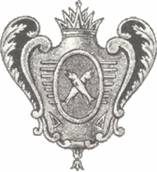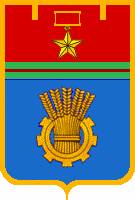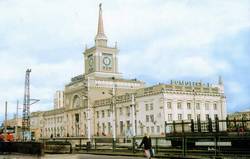

|
Volgograd has changed its name three times for its 400 years history: Tsaritsyn, Stalingrad and Volgograd. Each name of city† is connected to great, significant events in a history of Russia.† The city was founded in 1589 as a fortress guarding the trade route along Volga.It took its first name, Tharitsyn, from the tributary of the Volga and was originally built on the island.† An the beginning of the17th centuries Tsaritsyn was burnt to the ground and then was rebuilt on the right bank of the river. Located in the center of Russia,† the city had† strategic importance. The development of Tsaritsyn was aided by coming of the railways, the first of which was built in 1862, and the increase of shipping on the Volga.in the |
|
comparatively short period Tsaritsyn became a major transport, industrial and trade center The goods were transported from Volga to Don and further on the Azov and Black seas. In 1898, the first iron-and-steel works was built with the aid of French capital. This led to development of a metal working industry at the city. In Tsaritsin were built several timber yards, armaments factory, the largest oil and petrol factory on the Volga. Tsaritsyn also had the biggest wholesale fish market in Russia. Originally the population of Tsaritsyn was 300, in 1915 its population was already† 135000. During the fierce and bloody civil war the counter-revolutionary armies attacking from the Don and the Northern Caucasus tried to join up with the† counter-revolutionary from the East and advance upon Moscow so as to cut it off from the Siberia and the Lower Volga, which provided food, raw materials and fuel.
|


|
The city has been completely destroyed. On April 10th,1925, Tsaritsyn was renamed Stalingrad. †In a short time were built the first in the country tractor plant. On the eve of the Second World War it produced 40 per cent of the countryís tractors. New ship factory produced shipping- steamers, barges,etc. The port of Stalingrad was the fourth largest in the Soviet Union. At the beginning of the Second World War Stalingrad became one of the largest industrial centers producing armaments: tanks, mortars, heavy guns, automatic weapons. According to a national census in 1939 the population of Stalingrad was |
|
445,000. There were 133 schools, 4 theatres, 89libraries, 3 museums, 4 higher educational institutes, 19 technical colleges.In summer 1942 in Volga and Don steppes began one of the greatest battles in the Second World War Ė the battle of Stalingrad. †On August 23rd 1942 German troops reached the Volga north of Stalingrad. On that day the enemy carried out saturation bombing of the city, flying up to 2 thousand sorties. Millions of bombs rained down upon the city. Approximately 40 thousand people were died and 150 thousand were wounded. The earth of Stalingrad was crumpled and blackened. The city seemed to have been struck by a terrible hurricane. †Soviet troops fought heroically for Stalingrad, house by house, street by street. †Only on February 2nd, 1943 the battle of Stalingrad† has ended. There is nothing left in the city after the battle but charred ruins. 85% of all housing were destroyed, all parks and squares have been burned The Stalingrad Battle raged 200 days. During the fiercest period two millions from both sides were engaged in the battle. The battle was the turning point of the Second World War.
|


|
It is hard to imagine the past when one sees present day Volgograd. Volgograd is a lineal city. It stretches for 70 miles along the Volga, which is the largest river in Europe. At Volgograd it is 2 km wide. Volgograd is called a city of tourists Many places of interest in Volgograd are connected with its† heroic history. In the center of Volgograd is situated Fallen Heroesí |
|
Square with a common grave. A guard of honour is held by† schoolchildren. The Alley of Heroes leads to central embankment with its granite lanterns, wide granite steps, white majestic pillars. From the high bank there is a magnificent view over the Volga. Tourists can go on coach excursion round the town or on a motorboat along the Volga, visit Planetarium, State Panoramic Museum ď The Stalingrad BattleĒ, the memorial† complex on the Mamayev Kurgan, the museum ďThe old SareptaĒ, which is located in the south district of Volgograd Krasnoarmeyski, to take a stroll along the† embankment at the entrance to the Volga-Don† Shipping Chanal In the evening funs of music can enjoy remarkable concerts of the symphonic orchestra, performances of the best musicians and honoured opera singers and artists of Russia in the central concert hall, located on the Volgograd embankment or go to the performance to one of the theatres of the city. †In the city there are hundreds of cafes, restaurants, canteens, markets, modern stores. In 2003 a new modern biggest supermarket† Park House was built in Volgograd. It has 4 storeys with a lots of shops and boutiques On the first floor there is a vast food market 150 industrial enterprises† have been reconstructed or built in Volgograd. It is a major producer of tractors, drilling equipment, high grade steel, aluminium, medical equipment and chemical products. We invite you to† our city, full of sun and light, which like a mirror reflected the fate of the country and the whole nation.
|



